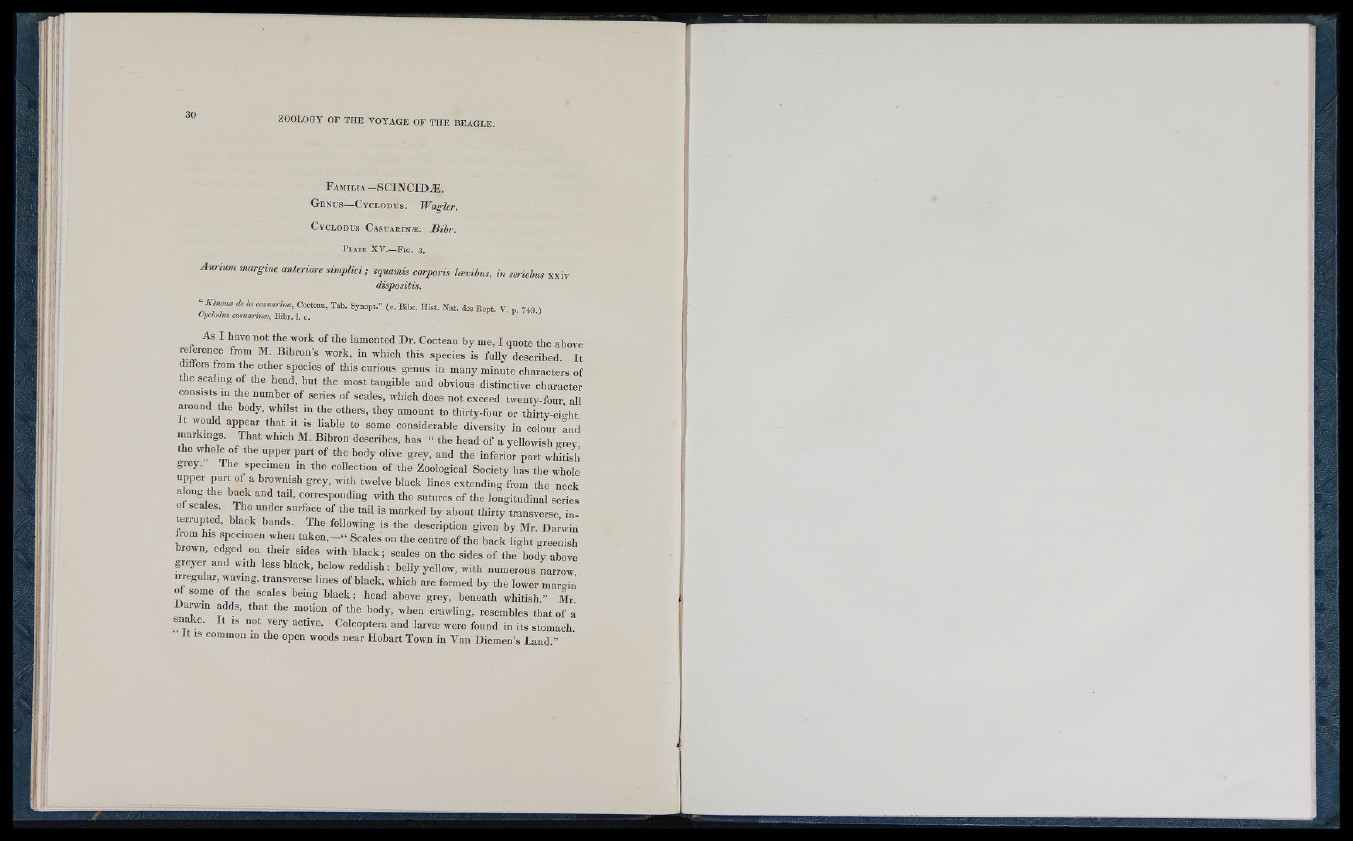
F a m i l i a -S C IN C ID Æ .
G e n u s— C y c l o d u s . Wagler.
C y c l o d u s C a s u a r i n æ . Bibr.
P late X V .—F ig. 8.
Aurmm nmrgine anteriore simplici; squamis corporis lævibus, in seriebus xxiy
dispositis.
” de la caeuarina, Ooctau, Tab. Synopt." (v. Bibr. Hist. Nat. des Rept. V. p 749 1
tyclodus casuarmoe, Bibr. 1. c.
As I have not the work of the lamented Dr. Cocteau by me, I quote the above
reference from M Bibron’s work, in which this species is fully described. It
iffers from the other species of this curious genus in many minute characters of
the scaling of the head, but the most tangible and obvious distinctive character
consists m the number of series of scales, which does not exceed twenty-four all
around the body, whilst in the others, they amount to thirty-four or thirty-eiiht
I t would appear that it is liable to some considerable diversity in colour and
markings. That which M. Bibron describes, has “ the head of a yellowish grey
the whole of the upper p a rt of the body olive grey, and the inferior part whitish
grey. The specimen in the collection of the Zoological Society has the whole
upper p a rt of a brownish grey, with twelve black lines extending from the neck
along the back and tail, corresponding with the sutures of the longitudinal series
of scales. The under surface of the tail is marked by abont thirty transverse, in-
teirupted, black bands. The following is the description given by Mr. Darwin
rom his specimen when t a k e n . - - Scales on the centre o f the back light greenish
brown, edged on their sides with bla ck; scales on the sides of the body above
greyer and with less black, below reddish : belly yellow, with numerous L rrow
irregular, waving, transverse lines of black, which are formed by the lower margiñ
of some of the scales being bla ck ; head above grey, beneath whitish.” Mr
Darwin adds, that the motion of the body, when crawling, resembles that of a
snake. I t is not very active. Coleóptera and larvæ were found in its stomach
IS common in the open woods near Hobart Town in Van Diemen’s Land.”